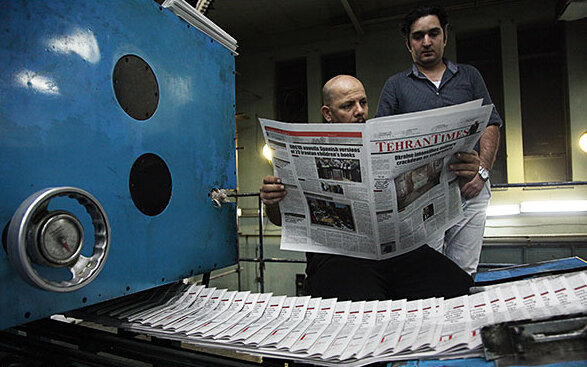Exploring Iran’s printing history: from religious texts to cultural exchange

TEHRAN – The National Day of the Printing Industry in Iran, which is celebrated on September 2 this year, holds immense cultural and historical significance, serving as a tribute to the invaluable impact of this industry in shaping the country's identity, safeguarding its rich heritage, and facilitating communication.
Printing was first introduced in Iran during the Safavid dynasty in the early 16th century. The first printing press in Iran was installed by an Armenian merchant named Manuscript Khachatur Kesaratsi in 1638. The first books that were printed in Iran were mainly religious texts, including the Quran, prayer books, and religious treatises as well as books on Persian literature and Iranian history.
However, the emergence of the printing industry in Iran can be traced back to the 19th century when lithographic printing was introduced.
During the 19th century, Iranian intellectuals started recognizing the significance of modern education as they established more connections with the Western world. Consequently, they began emphasizing the translation and publication of new and valuable subjects.
When Iranian intellectuals journeyed to Europe, they eagerly acquired the knowledge and techniques of printing. Armed with this newfound expertise, they brought back with them the necessary tools and materials to Iran, embracing the transformative power of this innovative technology.
The revolutionary technological advancement transformed the way information is shared, leading to the emergence of modern printing presses.
During that period, a number of Iranian books were sent to the Western countries. Despite the outdated printing technology and numerous errors, the publication of books stands as a significant achievement that reflects Iran's commitment to modernizing education and sharing its culture with the West.
During that time, a considerable number of Western books were also translated into Persian. The translation of books first began with the efforts of James Camel, an English teacher who was working in Tabriz at the time. He translated the first book into Persian in 1849, which was called “The History of Alexander”.
In the next year, Mohamad Ali Nami, a scribe in the court of Abbas Mirza, undertook the translation of Voltaire's renowned works "History of Peter the Great" and "History of Charles XII", both of which shed light on the lives and achievements of these historical figures. A book about smallpox was translated into Persian in 1864 and published in 1866. Then some books about the Roman Empire were translated by Mirza Reza Mohandes.
With time, traditional methods were gradually replaced by more sophisticated techniques, such as offset printing and digital printing. These advancements not only increased the efficiency of the printing process but also expanded the range of materials that could be printed.
However, due to technological limitations and the substantial costs involved, the printing industry shifted most of its focus towards newspapers. Iran's newspaper era commenced in 1874 with the publication of Mirza Saleh's newspaper in Tehran.
The cultural preservation has greatly benefited from the printing industry in Iran, making it one of its most significant contributions. The preservation of a nation's valuable cultural heritage heavily relies on the ability to reproduce manuscripts, historical documents, and literary works. Not only has this prevented the loss of valuable artifacts, but it has also made them more accessible to a larger audience.
The significance of the National Day of the Printing Industry lies in recognizing and honoring the industry's crucial contribution to safeguarding Iran's rich history, languages, and customs.
In today's digital era, where electronic platforms dominate information consumption, the printing industry maintains its influential role as a powerful means of communication. Print materials such as newspapers, magazines, books, and other publications continue to be trustworthy and reliable sources of information. They provide opportunities for thorough examination and encourage the development of analytical thinking.
Newspapers, magazines, and books offer a physical haven for those who thirst for knowledge, providing a much-needed escape from the digital storm.
Moreover, the industry contributes significantly to societal progress by providing employment opportunities for a wide range of professionals, including writers, editors, designers, and technicians. This national day recognizes these contributions and highlights the importance of maintaining a balance between digital and print media.
SAB/
Leave a Comment